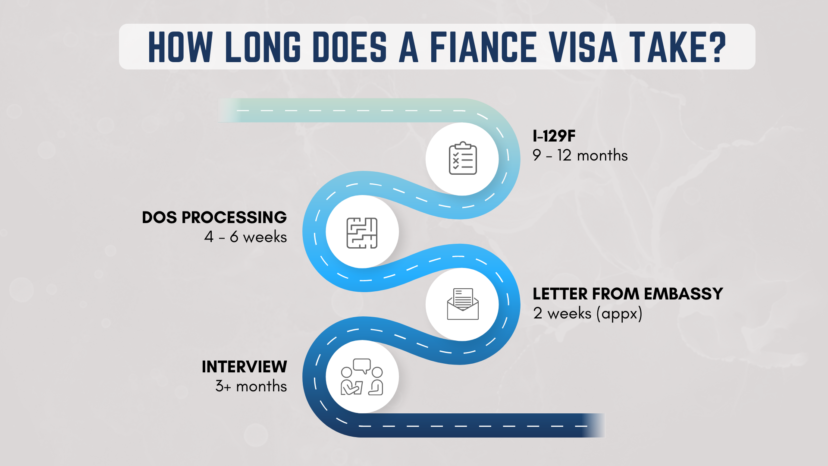A K-1 visa holder in the USA can marry a US citizen. In fact, the purpose of the K1 visa, also known as a fiancé visa, is to allow the foreign fiancé(e) of a US citizen to enter the US for the purpose of marrying their US citizen petitioner within 90 days of arrival.
Sponsoring someone for a K-1 visa in the United States involves several steps.
Here is an overview of the process:
Meet the eligibility requirements:
To sponsor someone for a K-1 visa, you must be a U.S. citizen and intend to marry the beneficiary within 90 days of their arrival in the United States.
Submit the Form I-129F:
You must file the Form I-129F, Petition for Alien Fiancé(e), with the U.S. Citizenship and Immigration Services (USCIS) to start the process. You will need to provide evidence of your U.S. citizenship, proof of your relationship with your fiancé(e), and other supporting documents.
USCIS processing:
USCIS will review your petition and supporting documents. If your petition is approved, it will be sent to the National Visa Center (NVC) for further processing.
NVC processing:
The NVC will forward the petition to the U.S. Embassy or Consulate in the country where your fiancé(e) resides. The embassy or consulate will then provide your fiancé(e) with instructions on how to apply for a K-1 visa.
Medical exam and interview:
Your fiancé(e) will need to undergo a medical exam and attend an interview at the U.S. Embassy or Consulate. During the interview, they will need to provide additional supporting documents and answer questions about their relationship with you.
Fake Marriages for Immigration come with Consequences
What after K-1 Visa is issued
K-1 visa issuance:
If the visa is approved, your fiancé(e) will receive a K-1 visa that allows them to enter the United States. They must use the visa within six months of issuance and marry you within 90 days of their arrival in the United States.
Overall, the K-1 visa process can take several months to complete, and it can be complex and time-consuming. It is important to make sure you understand the requirements and follow the instructions carefully to avoid delays or denials.
What if Immigrant on K-1 Visa divorces the sponsor
If a person immigrating on a K1 visa divorces within six months of entering the United States, they will no longer be eligible for adjustment of status to permanent residency based on that marriage.
In order to obtain permanent residency in the United States, a K1 visa holder must marry their U.S. citizen fiancé(e) within 90 days of entering the United States, and then apply for adjustment of status to become a lawful permanent resident. If the marriage ends in divorce before the K1 visa holder obtains their permanent residency, they will no longer be eligible for adjustment of status based on that marriage.
However, if the K1 visa holder entered the United States and married their U.S. citizen fiancé(e) within the 90-day period, and then later the marriage ends in divorce, they may still be eligible for adjustment of status based on other grounds, such as through employment, family relationships, or other humanitarian reasons. It is important to consult with an immigration attorney to understand the available options and the potential consequences of a divorce on their immigration status.
I bet you may not have seen such wierd marriages
What if the sponsors subjects the Immigrant under K-1 Visa to Domestic Violence
If an immigrant under K1 visa complains of domestic violence by their sponsoring partner, it is crucial that they seek help immediately. Domestic violence is a serious issue, and no one should have to endure it. Here are some steps that they can take:
Call the police:
If they feel that their safety is in danger, they should call the police immediately. The police will be able to provide them with protection and can help them to file a report.
Seek medical attention:
If they have been physically harmed, they should seek medical attention right away. Even if the injuries are not severe, it is essential to document them in case they need to provide evidence later.
Contact a domestic violence hotline:
There are many hotlines available that provide help and support for victims of domestic violence. They can find the nearest hotline and call them to receive guidance and support.
Contact an immigration attorney:
They should seek the advice of an immigration attorney who is familiar with domestic violence cases. The attorney can help them to understand their legal options and can guide them through the process of seeking protection and immigration relief.
File for a protective order:
They may be able to file for a protective order against their partner. This order can provide them with legal protection and can prevent their partner from contacting or harming them.
It is important for the victim to remember that they are not alone, and there are many resources available to help them. They should also know that reporting the abuse will not affect their immigration status and that they may be eligible for immigration relief as a victim of domestic violence.

